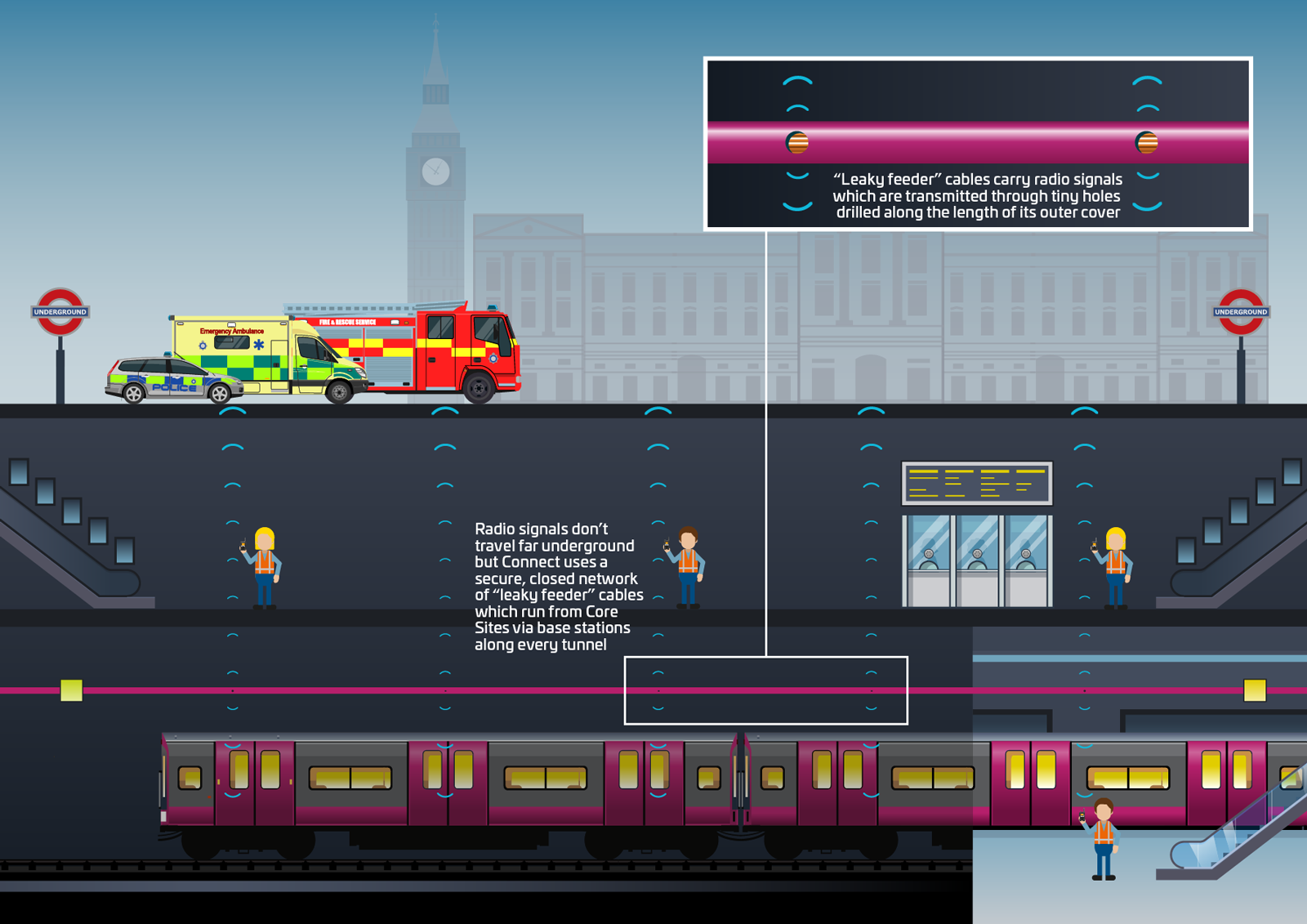Teamwork on the London Underground: keeping key workers on the move at the height of the COVID-19 pandemic
Even with the lockdown, there are a lot of people who need to move around London. Doctors, nurses, and other health workers; people in the food supply chain; education professionals; members of the government and the civil service; the police - these are just some of the people we all depend upon. And they rely on the London Underground.
Under normal circumstances, we’re happy to take all this for granted. But the current circumstances are anything but normal. Our lives and the economy are at stake. A reliable train service is not just a ‘nice to have’, it is a matter of national importance. But what keeps the London Underground running?
The London Underground cannot operate without something called the ‘Connect’ radio communications system. This network, which was built, installed, and is now run by Thales, covers nearly 250 miles of track and 270 stations. It carries the radio signals, data and CCTV transmissions that Transport for London’s (TfL) staff needs to keep the London Underground safe.
Connect also supports the ‘Airwave’ radio system, which allows the emergency services on the surface to communicate to those underground, even in the deepest tunnels. It’s a vital resource: if Connect fails, the trains can’t run. And if the trains can’t run, the key workers on whom we all rely can’t get to where they have to be, or do what we need them to do.
Connect is supported and maintained by teams from TfL and Thales. The relationship between them is so tight that an outsider would see them not as two workforces, but as one. The mission? To keep the trains moving without ever compromising safety. That’s easy to say and, indeed, the Underground environment isn’t especially dangerous, providing that strict procedures are followed. But it is horribly unforgiving. There is absolutely no room for complacency.

Fix it now. Fix it fast.
As you would expect on a network this big, preventative maintenance is a never-ending task. It sounds mundane, but even simple things like replacing the filter in an air conditioning unit has to be done according to a carefully thought out schedule. If the filter fails, the temperature in equipment rooms can rise. And when equipment rooms get too hot, components start to fail; batteries sometimes give up. Suddenly, everything starts cascading into what could be a major problem.
Scheduled maintenance is performed between 2:00 am and 6:00 am when no trains are running. For other issues, though, the team is on call to respond at any time of day or night.
“If somebody reports a fault that threatens the closure of a line, for example, we get out there straight away and fix the problem there and then,” said Program Director Peter Gaylor.
“We still need to make sure that staff can operate the radios, and that they are able to communicate with control centres and station managers when they are trackside. That has to be a priority. But even that is governed by the golden rule that safety is never, ever compromised. You don't take shortcuts; you don't put yourself in a dangerous position.”
Distancing is practised, too: the engineers tend to move around in vans, rather than on the trains; working in two’s but avoiding contact with other people wherever possible.
Best efforts in difficult times
Everyone is making their best efforts but there is no denying that these are difficult and uncertain times. The normal super-fast response times can’t always be met, and for obvious reasons. If a call out would result in bringing people into close proximity with each other, for example, or if it can’t be answered immediately because only one engineer is available, common sense must prevail. No one wants to risk spreading COVID-19 for the sake of only a few minutes.
To maximise the team’s ability to respond quickly – something which could be substantially diminished if COVID-19 spreads through it – TfL has imposed a ‘Safe Stop’ which pauses all non-critical work, freeing manpower for more urgent work.
So far, it’s working. Everything is under control. Business continuity plans that were thrashed out years ago and have been frequently reviewed and updated, are providing much-needed resilience. But the situation remains fluid.
There are plenty of challenges ahead, some of which will be hard to anticipate. So the strongest resource of the London Underground is the agile and responsive teamwork of TfL and Thales, a ‘one team’ philosophy, and an ingrained determination to keep the trains running on time, safely, at a time when London’s key workers need them most.


